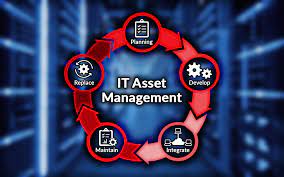The Comprehensive Guide to Effective IT Asset Management Strategies BenefitsBest Practices

The Comprehensive Guide to Effective IT Asset Management Strategies BenefitsBest Practices
Definition and Scope of IT Asset Management
Importance in the Digital Era Leveraging Assets for Business Success Significance of Effective Asset Management for Efficiency and Cost Optimization
Understanding IT Asset Management
Overview of IT Assets Hardware, Software Beyond
The Lifecycle of IT Assets: Acquisition Deployment, Maintenance Disposal
Key Components Objectives of IT Asset Management
Benefits of IT Asset Management
Cost Savings and Budget Optimization
Improved Operational Efficiency and Productivity
Compliance Adherence and Risk Mitigation
Enhanced Decision-making through Data-driven Insights
Challenges in IT Asset Management
Asset Discovery Inventory Accuracy
Managing Asset Lifecycle Technology Obsolescence
Security Risks Data Protection
Scalability Complexity in a Dynamic IT Environment
Strategies for Effective IT Asset Management
Implementing Robust Asset Tracking Systems and Automation
Standardization and Centralized Management Practices
Lifecycle Planning and Regular Audits for Optimal Utilization
Integration of Asset Management with IT Service Management ITSM
Embracing Cloud-based Solutions for Scalability and Flexibility
Best Practices Case Studies
Case Study 1 Successful Implementation of IT Asset Management in Company X
Case Study 2 Examples of Cost Savings and Efficiency Gains through Asset Management Best Practices
Industry Insights Proven Strategies from Leading Organizations
Future Trends Innovations
Emerging Technologies Shaping the Future of IT Asset Management
Focus on Sustainability Green IT in Asset Management Practices
Leveraging Artificial Intelligence Machine Learning in Asset Optimization
Recap of the Key Points
Importance of Adapting and Innovating in IT Asset Management
Final Thoughts on Achieving Efficiency Cost Reduction Future proofing Through Effective Asset Management
IT asset management ITAM offers various benefits to organizations contributing significantly to their operational efficiency cost savings compliance adherence overall success Here are some key benefits
Cost Savings Optimization
Efficient IT asset management helps in optimizing costs by providing visibility into the entire asset lifecycle. It enables organizations to make informed decisions about purchasing maintaining retiring assets reducing unnecessary spending on redundant or underutilized resources.
Improved Operational Efficiency
Proper asset management ensures that IT resources are available when needed, reducing downtime due to equipment failures or shortages. It streamlines workflows by eliminating delays caused by misplaced assets or outdated technology thereby enhancing operational efficiency.
Enhanced Security Compliance
ITAM facilitates better security compliance measures It helps in tracking software licenses ensuring compliance with legal requirements mitigating security risks by identifying vulnerable or outdated systems that need updates or replacements.
Optimized Resource Utilization
By accurately tracking managing assets organizations can better utilize their resources. They can reallocate or redistribute assets efficiently ensuring that each resource is used to its maximum potential thereby avoiding unnecessary purchases.
Improved Decision making with Data Insights
IT asset management provides valuable data insights into asset usageperformance lifecycle. Analyzing this information helps in making informed decisions about future technology investments upgrades or replacements aligning IT resources with business goals.
Streamlined Vendor Management Negotiations
Having a clear overview of assets enables better vendor management. Organizations can negotiate better contracts manage warranties track service evel agreements effectively leading to improved vendor relationships and cost savings.
Enhanced Support for Business Continuity
Well managed assets contribute to business continuity by ensuring that critical systems resources are available when needed. This helps in maintaining operations during unforeseen events or disasters.
Adherence to Sustainability Goals
IT asset management contributes to sustainability efforts by reducing waste It minimizes unnecessary purchasing disposal of outdated or unused assets promoting responsible resource management and environmentally friendly practices.
In summary IT asset management isnt merely about tracking hardware software; its a strategic approach that adds significant value to an organization by optimizing costs, ensuring compliance improving efficiency supporting informed decision making.